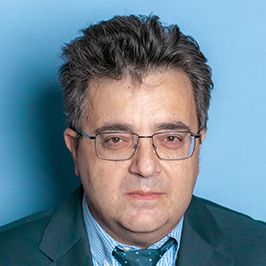Emergency fertility preservation for medical reasons
Emergency fertility preservation (EFP), a new field in Medically Assisted Reproduction, provides assistance to patients who face the risk of losing their fertility when there is an urgent need to start treatments, such as chemotherapy, radiation, other medical treatments, or surgery. Fertility preservation methods offer the opportunity to these patients, to possibly have a child, at a later time, after they have been successfully treated.
Over the past decades, survival rates among young cancer patients have steadily increased. Advances in the field of oncology, especially in early detection and treatment management, improved the prognosis of cancer patients. As a result, quality of life after treatment became an important consideration for these patients in recent years.
According to National Statistics, the average age of first time mothers in developed countries continues to rise, making it likely that more women will be nulliparous at the time of diagnosis of cancer. This fact adds a greater focus to the need for fertility preservation in those women.
International guidelines state that timely information and consultation on methods and options for EFP should be provided to all patients of young age when planning gonadotoxic treatments, before they start their treatment.
In most cancers, the treatment strategies used, such as chemotherapy, radiotherapy or ovaries surgery, may lead to reduction or loss of ovarian function with consequent subfertility and premature ovarian insufficiency. Novel targeted therapies, increasingly used by oncologists, have a largely unknown impact on reproductive function. The degree of damage to ovarian function depends on the type and dose of chemotherapy and radiotherapy, the woman’s age as well as the initial ovarian reserve of the woman. Therefore, EFP consultation should be thorough, evidence-based and individualized.
Women should be advised that cryopreservation of embryos and oocytes are methods clinically established for female fertility preservation. Ovarian tissue cryopreservation is considered to be an innovative method, offered where oocyte/embryo cryopreservation is not feasible or at patient preference. In vitro maturation of oocytes (IVM) is regarded, at present, as an innovative FP procedure, performed when oocyte cryopreservation is required but ovarian stimulation is not feasible. Cumulative live birth rates are dependent on the age of the woman at the time of EFP and indication for cryopreservation.
For embryo or/and oocyte cryopreservation (in case of a single woman or a woman who does not wish to preserve embryos), hormonal stimulation with gonadotropins is needed, to induce multiple follicle recruitment aiming at obtaining more than one mature oocyte per treatment cycle.
As there is often an urgent need to start cancer treatment, new protocols to facilitate the start of the ovarian stimulation have been proposed, using a GnRH antagonist. GnRH antagonist protocols minimize the time required for ovarian stimulation and can also be applied with random initiation (random start), that is, regardless of the woman’s cycle day. Consequently, ovarian stimulation can start immediately, with no significant delay to the start of the cancer treatment. In general, the time to egg retrieval is shortened to about 2 weeks in most cases.
Anti-estrogens, such as letrozole, are co-administered alongside gonadotropins, in an effort to reduce potential harm associated with high estradiol levels and increase the safety of stimulation protocols for women with breast cancer undergoing EFP.
Ovarian tissue cryopreservation requires a surgical procedure, in which the ovary is entirely or partially removed, processed, frozen, and stored for future use. The advantage of ovarian tissue cryopreservation is that it does not require ovarian stimulation with medication and can be performed immediately. When the patient wishes to become pregnant and a multidisciplinary medical assessment is completed, the ovarian tissue is then thawed and re-implanted. Resumption of normal ovulatory menstrual cycles has been reported in over 90% of patients within a 4–9 months’ period after transplantation.
At a time when urgent treatment for serious medical reasons is needed, decision-making regarding fertility preservation is stressful. It is of outmost importance to allow for high-quality decision-making by providing information and a thorough and individualized fertility consultation to these patients.







